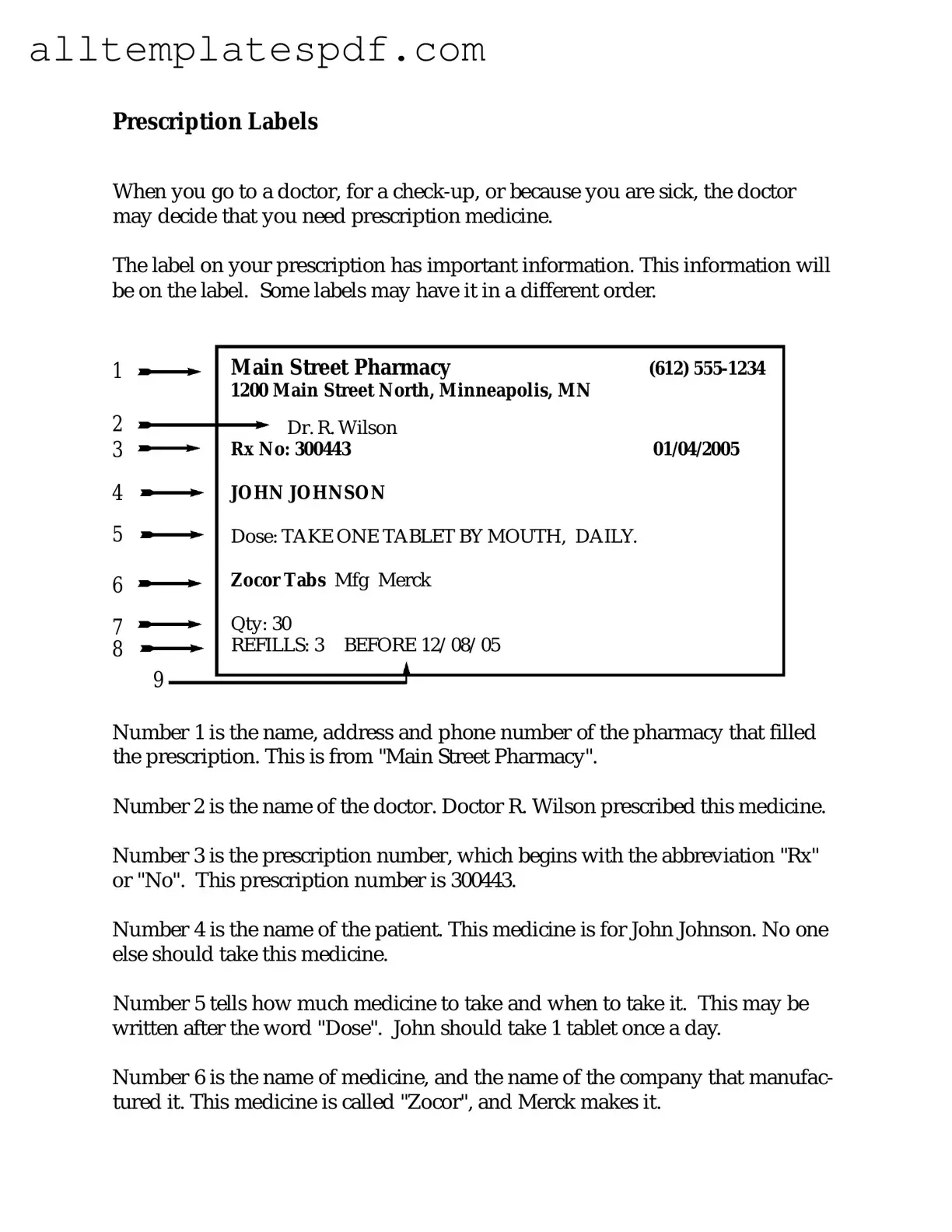Filling out the Prescription Label form accurately is crucial for ensuring that medications are dispensed correctly. One common mistake is providing incomplete patient information. Omitting details such as the patient's full name or date of birth can lead to confusion and errors in medication dispensing. Always double-check that all required fields are filled in completely.
Another frequent error involves incorrect medication details. Patients sometimes misread the medication name or dosage instructions, leading to potential health risks. It's essential to verify that the medication name is spelled correctly and that the dosage matches the prescription provided by the healthcare provider.
People often forget to include the prescribing physician's information. This includes the doctor's name and contact number. Without this information, pharmacists may struggle to verify prescriptions, which can delay the filling process. Always ensure that the prescribing physician's details are accurately recorded on the form.
Additionally, the timing of medication administration is frequently overlooked. Patients may neglect to specify how often the medication should be taken. This information is vital for ensuring proper usage and avoiding adverse effects. Clearly indicate the frequency of dosage on the form.
Another mistake involves not checking for allergies. Patients sometimes fail to disclose known allergies or sensitivities to medications. This omission can have serious consequences. Always include any relevant allergy information to safeguard against potential allergic reactions.
Many individuals also overlook the importance of providing insurance information. Without accurate insurance details, patients may face unexpected costs or delays in receiving their medications. Ensure that insurance information is complete and accurate to avoid complications.
Finally, a common error is not signing or dating the form. A signature is often required to validate the prescription. Failing to sign or date the document can result in delays or rejection of the prescription. Always remember to sign and date the form before submission.
